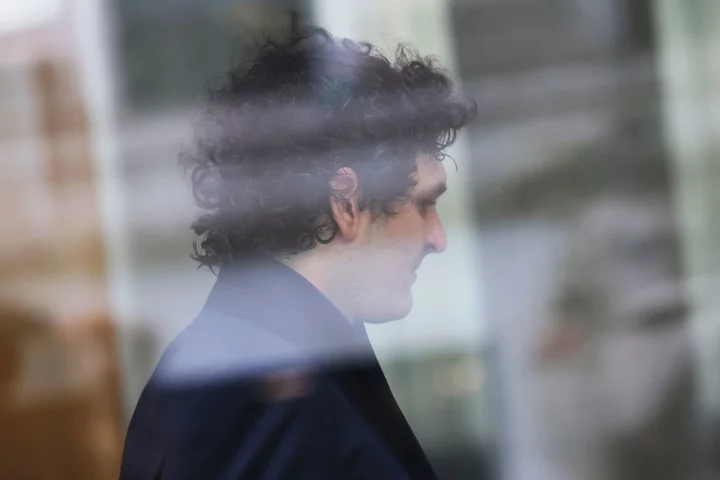FTX co-founder Sam Bankman-Fried will likely finish testifying in his criminal fraud trial Tuesday, giving federal prosecutors their last chance to grill the onetime King of Crypto about the spectacular collapse of his business empire and billions of dollars in customer losses.
While Bankman-Fried appeared confident and sure of his answers when he was questioned on the stand by his defense lawyers, his demeanor slowly dissolved after Assistant US Attorney Danielle Sassoon got her chance Monday. He evaded many of Sassoon’s queries under cross-examination and ultimately acknowledged he was aware or involved in key decisions at the FTX cryptocurrency exchange.
The case against Bankman-Fried centers on allegedly fraudulent transfers of billions in FTX customer funds to an affiliated hedge fund, Alameda Research. Government lawyers will get a few more hours Tuesday, Bankman-Fried’s third day before a New York jury, to attempt to highlight inconsistencies in his defense.
Bankman-Fried will be the last defense witness, and his lawyers will rest their case as soon as Tuesday. The government may present two more witnesses, including an FBI agent and an Apollo employee, before the case goes into closing statements and is finally handed to the jury for deliberations.
Here are the main takeaways from Bankman-Fried’s testimony Monday:
- Shifting Blame: He continued to blame others, including Alameda Chief Executive Officer Caroline Ellison, claiming he wasn’t always in the know. He said Ellison offered to step down after he called her into a meeting in June 2022. He said he was concerned about Alameda’s “historical failure to hedge” as well as its market exposure. “I was worried I hadn’t communicated enough with her about hedging earlier,” he said. “It wasn’t about blame for me. By far my biggest concern was that if Alameda remained unhedged, it would go bankrupt.” However, he said he’d been aware of Alameda’s growing liabilities and that he was behind important investment and spending decisions.
- Hedging: Prosecutors managed to land a few blows near the end of the day, Bankman-Fried said he’d known Alameda hadn’t fully hedged its risk, undermining his claim that Ellison mismanaged the company’s borrowing. On the stand, he said he was aware the company may not have been able to repay all of its debts. Ellison, who is also Bankman-Fried’s ex-girlfriend, testified earlier in the trial, saying he was the one who chose to make the investments that put Alameda in a leveraged position in the first place.
- Risky Investments: Bankman-Fried acknowledged he directed Alameda to make several billion dollars in venture investments, including the acquisition of the company that made a favorite video game, Storybook Brawl, a stake in the cryptocurrency news site the Block and Modulo Capital. “I think a few billion of them were my decision,” he said. Later he conceded that Alameda’s venture investments were too large, “given that they didn’t hedge that.”
- Board Director: Bankman-Fried said he was the only board member for some Alameda entities, though he hadn’t intended that. The revelation was a blow to his defense strategy, which has attempted to put distance between him and Alameda throughout the course of the trial.
- Safe: Sassoon aggressively questioned Bankman-Fried over his attempts to reassure the public that FTX was a safe crypto exchange, showing the jury an August 2021 tweet where he said “users’ funds and safety come first.” After he agreed that he wanted his followers to think consumer protection was important to him, the prosecutor asked him about a conversation with a Vox reporter in which he seemed to undermine his own argument. He told the reporter his public statements about wanting regulation were “just pr.” “In private you said things like ‘f*ck regulators?” Sassoon asked. “I said that once,” he replied.
- Appearance: In an effort to portray Bankman-Fried as someone who was calculated about his disheveled appearance, Sassoon focused on his testimony earlier in the trial that his infamous mop of hair came about because he “was kind of busy and didn’t bother to get my hair cut for a long period of time.” The prosecutor showed Bankman-Fried a New York Times article where he was quoted saying he thought it was “important for people to think I look crazy.” Bankman-Fried acknowledged that he “may have said parts of that.” The prosecutor also attempted to undermine his testimony about wearing t-shirts and shorts because he found them comfortable, asking if he told Anthony Scaramucci they were “part of his brand” when the FTX investor urged him to wear a tie on certain occasions. “I don’t recall saying that,” he said. “I may have.”
- Apology: Bankman-Fried famously went on a media tour after FTX’s collapse. He told the jury he spoke with journalists after stepping down as CEO because “it was the right thing for me to do” and because he “wanted to apologize about what happened.” However, Bankman-Fried repeatedly testified he couldn’t remember things he was quoted as saying in articles or in interviews. That prompted US District Judge Lewis Kaplan to interview and ask at one point, “Sir, do you remember saying that in words or in substance?”
Read More: SBF Admits to a Bigger Role at Alameda Under Tough Questioning
Author: Chris Dolmetsch, Yueqi Yang and Ava Benny-Morrison

